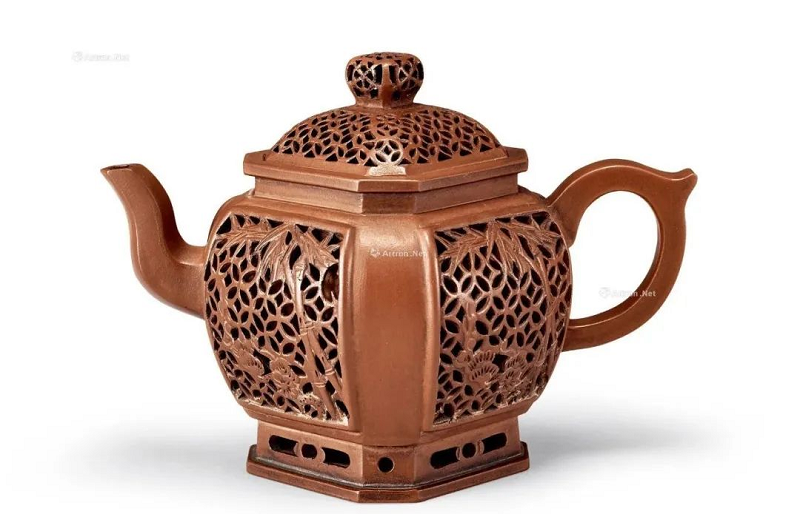The purple clay teapot is loved not only for its ancient charm, but also for the rich decorative art beauty it has continuously absorbed from China’s excellent traditional culture and integrated since its establishment.
These features can be attributed to the unique decorative techniques of purple clay, such as mud painting, coloring, and decals. Some decorative techniques are very difficult, and many are no longer produced.
Purple sand carving decoration is one of the traditional decorative techniques of purple sand. The so-called carving technique uses a technique of “carving”, which originally refers to the hollowing out of objects.
The technique of hollow decoration is very ancient, as early as the Neolithic period over 7000 years ago, it appeared on pottery. Purple sand carving began in the late Ming and early Qing dynasties and was popular during the Kangxi, Yongzheng, and Qianlong periods of the Qing dynasty.
At the beginning, the hollow pot only had a hollow layer and could not hold water. It was only used as a decoration for daily life; In modern times, some pot craftsmen occasionally attempted to carve through the hollow area, with two layers of body, the outer layer being the hollow layer, and the inner layer being the “pot gallbladder”, in order to brew tea.
The hollow out design is breathable and moisturizing, which is quite scientific and innovative. The hollow purple clay teapot has various shapes and exquisite craftsmanship. Its ethereal form gives people an indescribable beauty.
The process of hollowed out teapots is complex. It is made by hollowing out all four sides and then sticking them onto the inner liner. There is a strict requirement for the shape of the teapot, and most of them can only have a square structure. The square structure is also a challenge for pot makers, as it requires straight lines and a flat surface, which increases the difficulty of making hollow pots.
The structure of hollowed out pieces is relatively fragile, and even a little carelessness can lead to breakage, which requires the author to not only be careful when making them.
The four sides of the hollowed out surface should be seamlessly connected without any traces, and attention should be paid to the beauty of the pattern. In addition to spending effort and time, it is also a test of pot making skills. Therefore, many pot makers are hesitant, and high-quality hollowed out pots are even more rare!
Purple clay pot carving decoration appeared in the late Ming and early Qing dynasties, and was more popular during the Kangxi period. Today, this type of design and decoration is relatively rare and is mostly used for pot lids, buttons, etc.
Post time: Jan-29-2024






